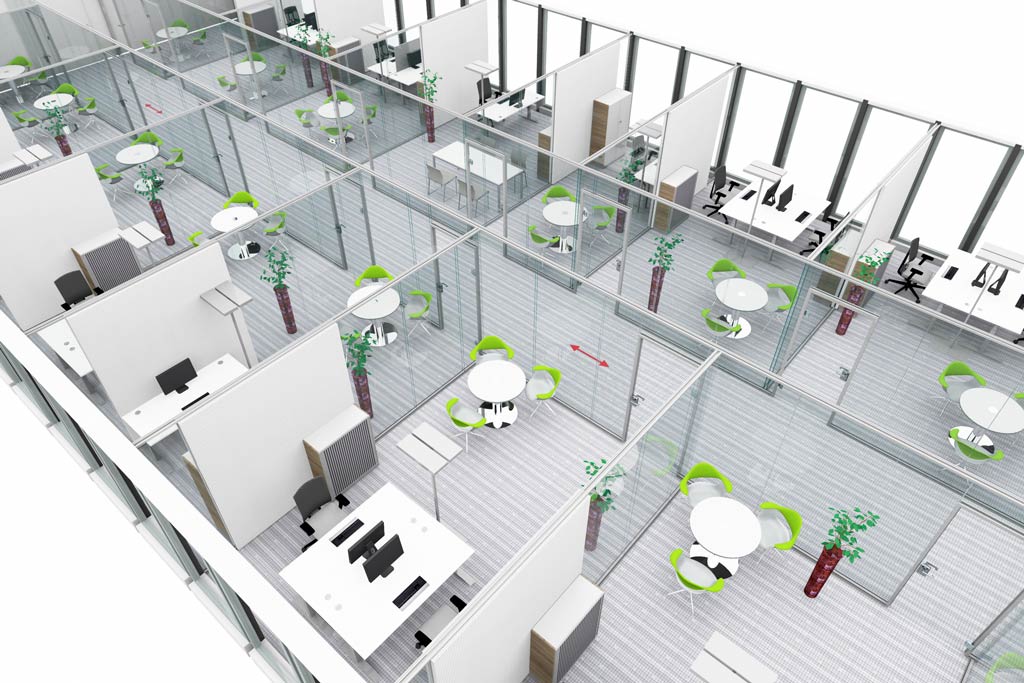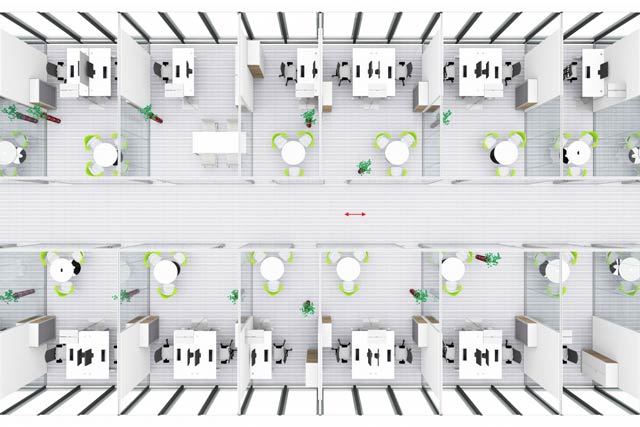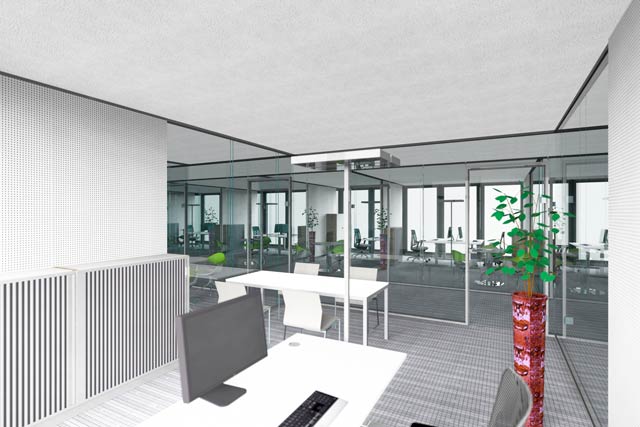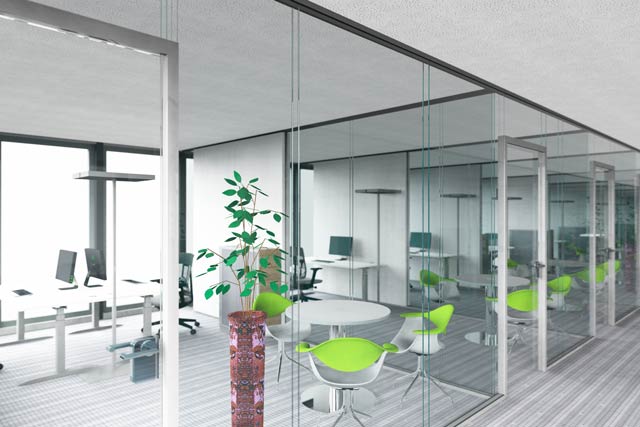
Cell office
The cubicle office consists of floor-to-ceiling enclosed office spaces that are lined up along the facade, forming a closed hallway that is exclusively a traffic route. The office space is occupied by one or more, but usually two, workstations. The cubicle office is still a popular form of office space for users. The reason for this may simply be that this type of construction results from the original possibilities of building. At a time when construction options, especially ceiling spans, were still very limited, buildings had to be constructed by stacking load-bearing walls and false ceilings on top of each other. The space between the walls formed the office cubicle. Buildings literally grew room by room. It was not until around 1950 that reinforced concrete construction methods became established. Only now did it become possible to build large, flexible rooms. This history is responsible for the cell office's long reputation. We also grow up in such spaces and live in similar structures. People have literally gotten used to an office with space for 1-3 people and being surrounded by walls.
Features cellular office
- closed office landscape
- Separation of jobs
- no team zones
- uniform work areas
- poor transparency, hardly any visual connections
- long distances, processes difficult
- poor acoustics in two-person and multi-person offices
- low flexibility
- weak land use
- good acoustics in the individual office
The cell office has the worst acoustics
The cubicle office is popular because of its opportunities to retreat. In individual offices and only in these, the closed door creates peace and good conditions for concentrated work. Transparent glass walls ensure a minimum level of flexibility. However, the acoustics are particularly bad in offices with two or more people. This is simply explained by the maximum syllable intelligibility from workstation to workstation. Simultaneous phone calls are tiring and require a very high level of concentration. High-performance absorbers can help here. Furthermore, the lack of land use is to be assessed negatively. Flexibility or what we understand by it today does not exist. Moving walls is complex. Team structures can hardly be changed. Long distances and weak cooperation, often a castle mentality, are to be criticized.




